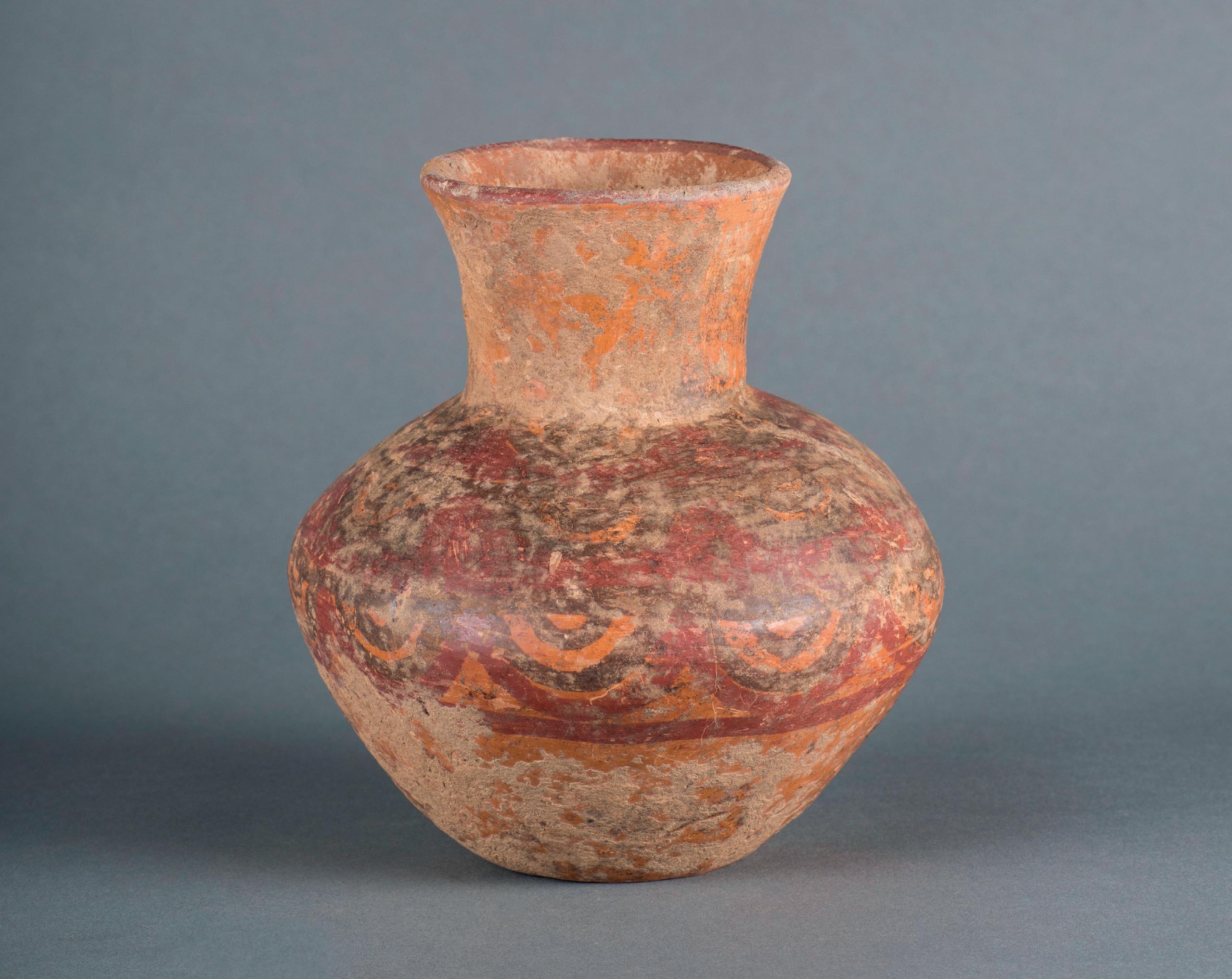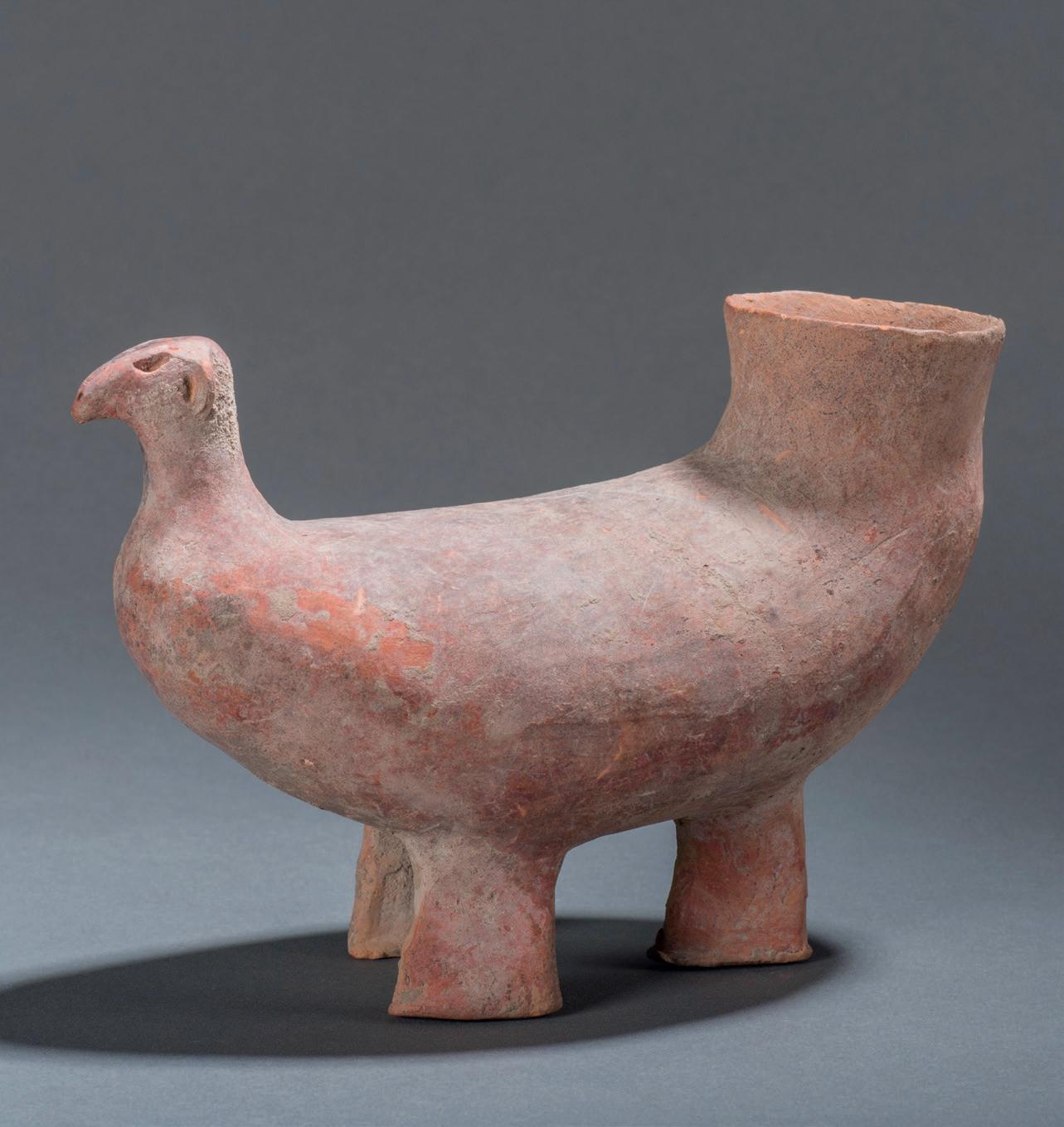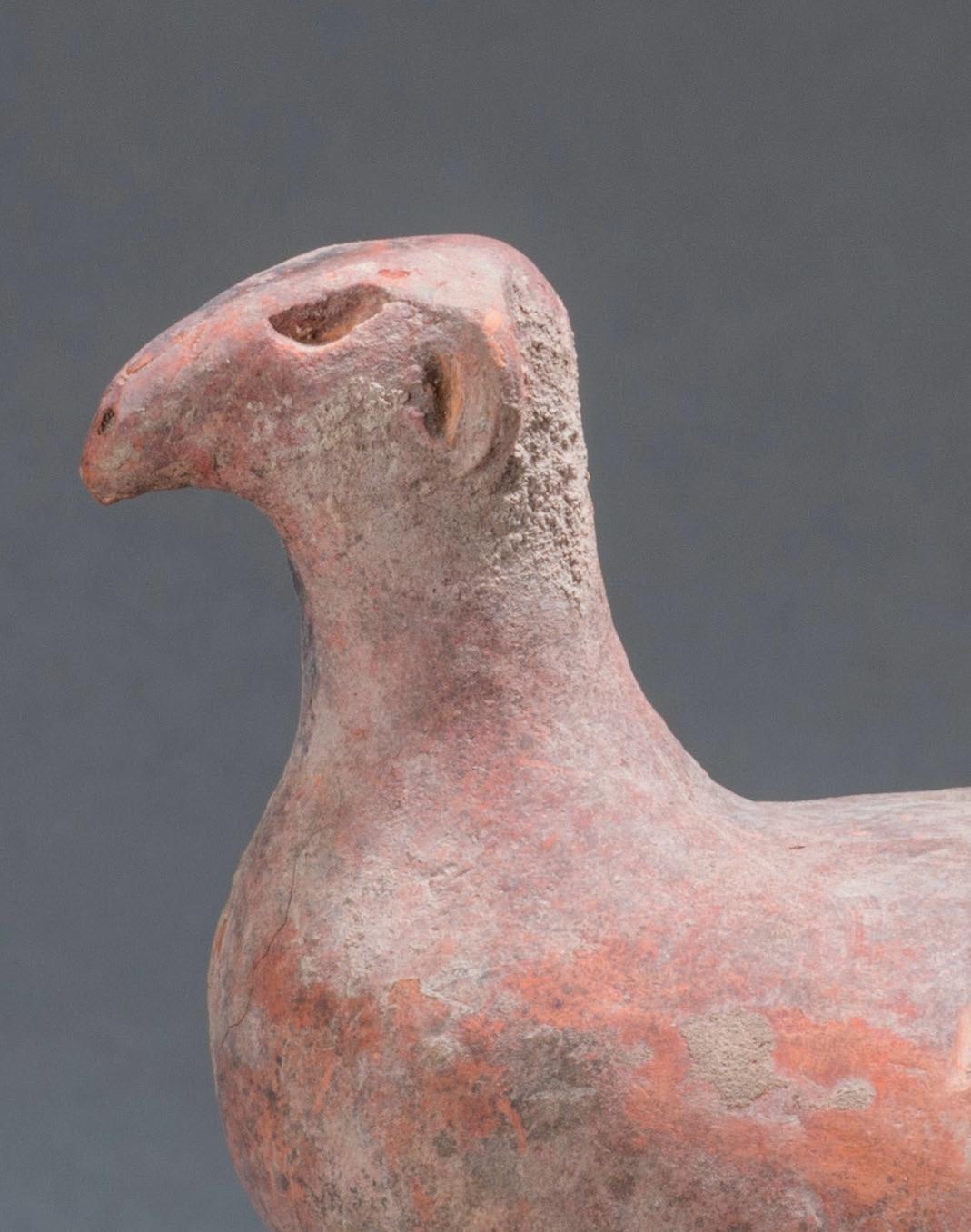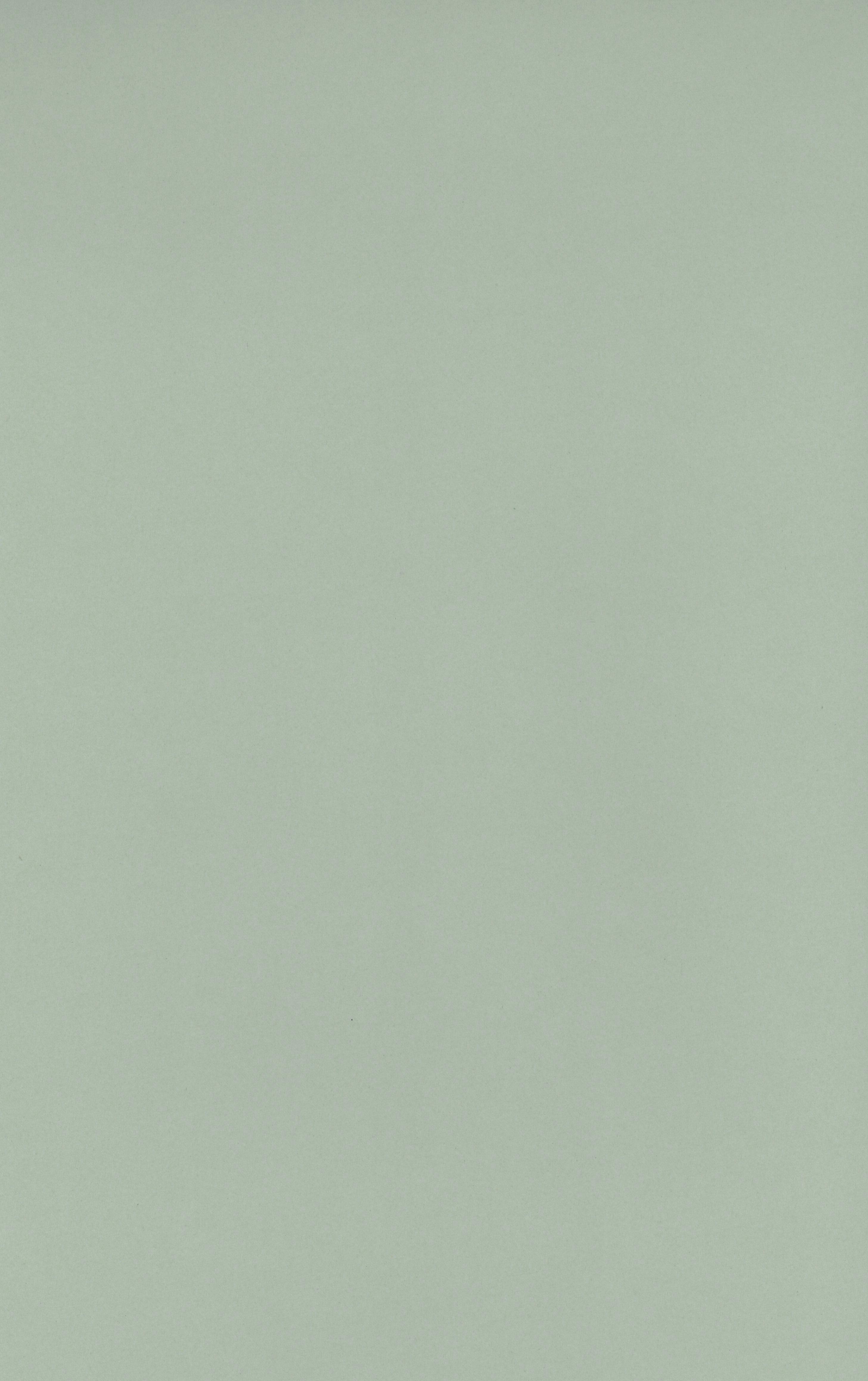

A ‘RED’ POTTERY BOWL PAINTED WITH TRIANGULAR DESIGNS
YANGSHAO CULTURE, BANPO PHASE, C. 4800 - C. 4300 BC.
A small, deep, ‘red’ pottery bowl, the inward sloping, slightly rounded sides with a sharp angle below the midpoint, tapering down to a rounded base with a small divot in the center underneath. The surface burnished on the exterior and on the upper part of the interior. Painted in dark brown with four repeated sections of geometric design, each composed of two triangles in alternating orientations, and intersecting diagonal lines. The ware fired reddish tan.
DESIGN NOTES:
Although the world seems at times to be governed by chaos and uncertainty, certain types of graphic design can convey quite the opposite. The painted geometric frieze on this little bowl is one such example. Even if Neolithic man was not familiar with the elegant equations of geometry and trigonometry, laws that we regularly use today, he seems to have had an instinctive appreciation for the graphic power of the forms they describe. Geometric designs can produce an immediate sense of order, precision, lucidity, and balance, as they do here. A far cry from chaos and uncertainty.
In the hands of a less disciplined designer/artist, a painted band of sharp right-angle triangles could easily have looked like broken shards randomly scattered over the upper surface of the bowl. Instead, these triangles are organized into small rational compositions with diagonal intersecting and connecting lines, sized to repeat exactly four times around the bowl without gaps or overlaps. It appears that the painter was carefully proceeding according to a well-thought out plan, and it gives the painting an articulate rhythm and predictability. This design must have been just as satisfying when it was created more than 5000 years ago as it is today. Other bowls with geometric patterns have survived from this period, but unfortunately, too few (fig. 1).
The meaning of this iconography, if indeed it originally was a reference to something objective, will remain a secret of the Banpo culture.
Also notice that the lines in the design, perfectly straight when viewed head-on, become increasingly curvilinear as the bowl is turned. This is very evident in the photographs. This progression from straight to curved and back to straight, pulses the design with animation and energy. The potter must have been aware of this, but what he thought of it is unknown.
三角紋彩陶碗
仰韶文化,半坡類型,約公元前 4800 年 – 前 4300 年
紅陶小碗,深腹,器壁微斂,略呈圓弧。朝下折收,圜底,底心內凹。外表及 上半身內表磨光。四組幾何紋飾,施彩深褐,各組斜對兩隻三角。經燒製,呈色 紅褐。
Diameter 直徑: 14.0 cm.
Height 高: 8.1 cm.
參考:



設計解析:
新石器時代,世事難料,變化無常;即便如此,部分彩陶器的紋飾卻步入正規,邁向規範,與預料難及的生活背道而馳。
此器便是一件很好的印證。新石器時代,對於抽象、幾何、三角定律、及對等協調,人們或感陌生;但能領悟圖形結構的 關係。三角紋彩陶碗,幾何圖形,規律精準。流暢之感,勻稱之美,油然而生。難以想象,陶碗誕生於萬變無常的新石器 時代。
陶工繪陶,技術若不夠純熟,便會將陶碗上半身畫有直角三角形的寬帶畫散。繪製此器,陶工訓練有素,將三角分成小份, 界線分明,對角線縱橫交錯,繞碗重複四回,緊密無間。陶工繪陶,構思縝密,按部就班,游刃有餘。陶碗韻律獨具。 無論是今天還是 5000 年以前,器表紋飾均令人滿意。可惜,類似陶碗,存世不多 (圖1)。 只有半坡文化的人了解紋飾寓意。紋飾繪線,正觀筆直,旋轉陶碗,逐漸彎曲。相片上一目了然,生氣盡顯。陶工必定自知 自覺,不過,難以知曉陶工心思。

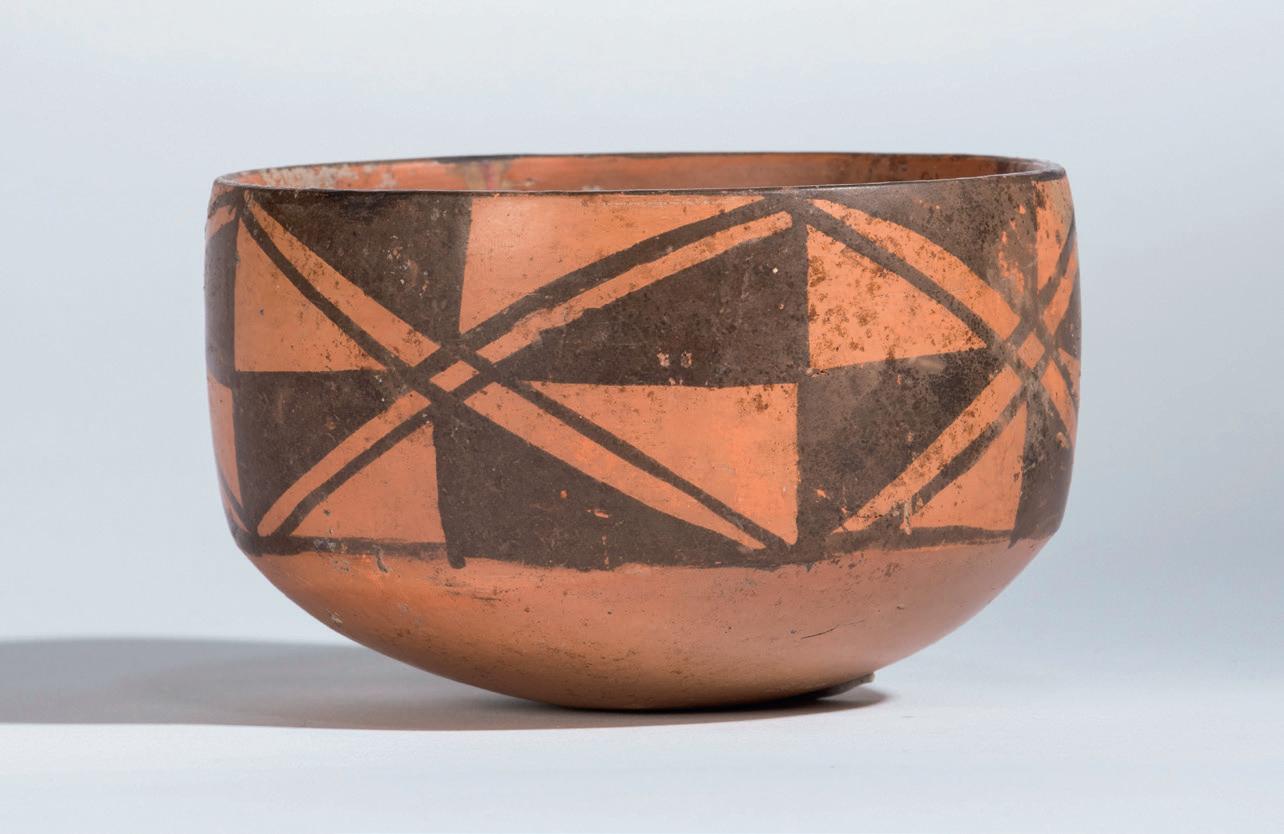
Three views

A ‘RED’ POTTERY BOTTLE WITH A HUMAN HEAD
YANGSHAO CULTURE, 4800 - 3500 BC.
A ‘red’ pottery bottle, with a bulb-shaped mouth at the top of a tall narrow neck, the bulb shape sculpted to represent a human head, the slightly elevated face with a nose, mouth, eyes, and one ear (the right ear missing but the surface in its place showing evidence of the breakage), the features pierced. The curly hair represented by balls of clay which have been pressed flat onto the scalp, except at the top of the head which was left open. The shoulder of the vessel slightly rounded, with a sharp angle at the widest point, and tapering down on a convex curve to a small base which is recessed in the center. The ware burnished and fired reddish tan.
DESIGN NOTES:
Neolithic renderings of humans, in drawings or sculpture, can have a powerful effect on modern viewers, by bringing them face to face with fellow human beings from thousands of years ago as this rare bottle from the Banpo phase of the Yangshao culture does.
This bottle is well-designed. The shape, both visually and functionally, has a strong and weighty base to counterbalance the long, thin, elegant neck.
The rounded form of the shoulder contrasts beautifully with the sharp edge at the midpoint. It is both intentional and precise, and it may be the lute line at which two separate sections were joined to form the main body. The surface is beautifully burnished overall.
REFERENCE 參考:

Fig. 1
A ‘red’ pottery statuette with a human head, Shaanxi Province, Yangshao culture, Banpo phase, 5th millennium BC, (thermoluminescence analysis, Oxford Authentication, no. C298h71) height 25.7 cm. After KRAHL 2006, no. 1016, p.9.

Fig. 2
A pottery bottle with a human head, Yangshao culture, height 23 cm. After LIU 1991, p. 16, upper right.
Oxford Authentication Ltd, thermoluminescence test C108u79, 15 July, 2008, is consistent with this dating. 2008年7月15日牛津鑒定公司熱釋光檢測, 編號:C108u79,斷代年份與圖錄一致。
Height 高: 26.0 cm.
Diameter at widest point 最寬徑: 18.3 cm.
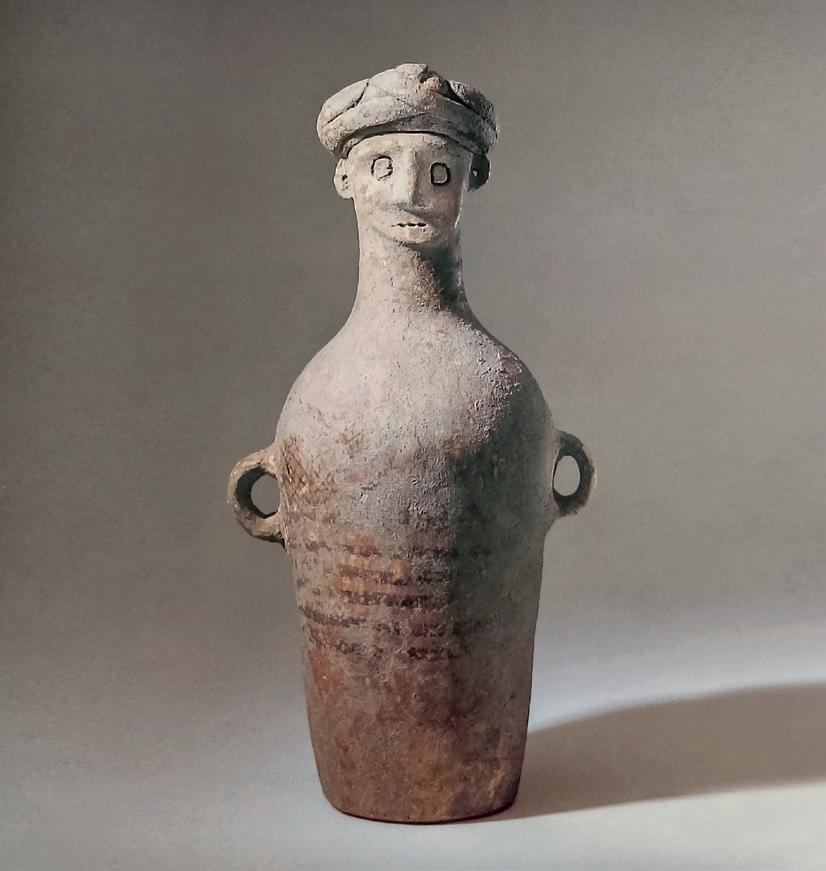
Fig. 3
A painted pottery bottle with a flat base (similar to fig. 4 p. 44), with a human head which is wrapped with entwined bands of clay, Majiayao culture, Shilingxia phase, 4th millennium BC, height 24 cm. After KRAHL 1999 (EBERHARDT), fig. 1, pp. 54 - 55. For an example of a similar form but without the conversion of the bottle mouth to a human head, see no. 5 (fig. 4).
FURTHER REFERENCE 附加參考: For a similar example excavated at Luonan in Shaangxi Province, see YANG 1988, col. pl. I and pl. 39. For a somewhat later painted bottle with a human head, of Miaodigou type, see ZHONGGUO MEISHU 1988 - 91, Vol. I, pl. 17.

紅陶尖底瓶
仰韶文化,半坡類型,約公元前 4800 年 – 前 4300 年
紅陶長瓶,中間寬,兩端逐漸斂收,弧壁。卷口圓厚,尖底封閉,底尖略圓。兩側各置環耳。經磨光,燒製, 橙黃光亮。
設計解析:
半坡文化時期常現尖底陶瓶,作用特殊,用作汲水。先在環耳及瓶頸處係上繩線,再將陶瓶放入水中。作者用 小尖底陶瓶自行實驗,結果如下:手持瓶頸處的係繩,將陶瓶放入水中,一旦放開繩子,陶瓶就會倒轉。由於 瓶口過重,空氣將浮在水中的陶瓶填充,瓶身翻轉。拿起環耳處的係繩,讓陶瓶平躺在水面上,水逐漸流入, 溢滿陶瓶。陶瓶承重,拉直瓶身,於水中豎起。最後,再拉住瓶頸處的係繩將陶瓶從水中提起。以上步驟,經反復 試驗,結果相同 (圖 1 )。
與已知尖底陶瓶相比,此器規格較大。存世尖底陶瓶,部分尺寸碩大,長約一米有餘 (圖 2 – 3 )。 用尖底陶瓶汲水,容量越大,就越能減少重複汲水的次數。新石器時代,人類社群遠離水源,尖底陶瓶一旦過大, 反倒不易提攜,笨拙不便。比此器再大的尖底陶瓶,為數不多,甚是罕見。
據近期出土文物研究報告報導,一些仰韶文化尖底陶瓶的內表及口沿處發現了疑似啤酒殘留物的物質。同一份報告 當中,出現了一隻半坡類型紅陶漏斗,或用它將液體注入尖底陶瓶 (圖 4 )。 尖底陶瓶可載酒水。
REFERENCE 參考:
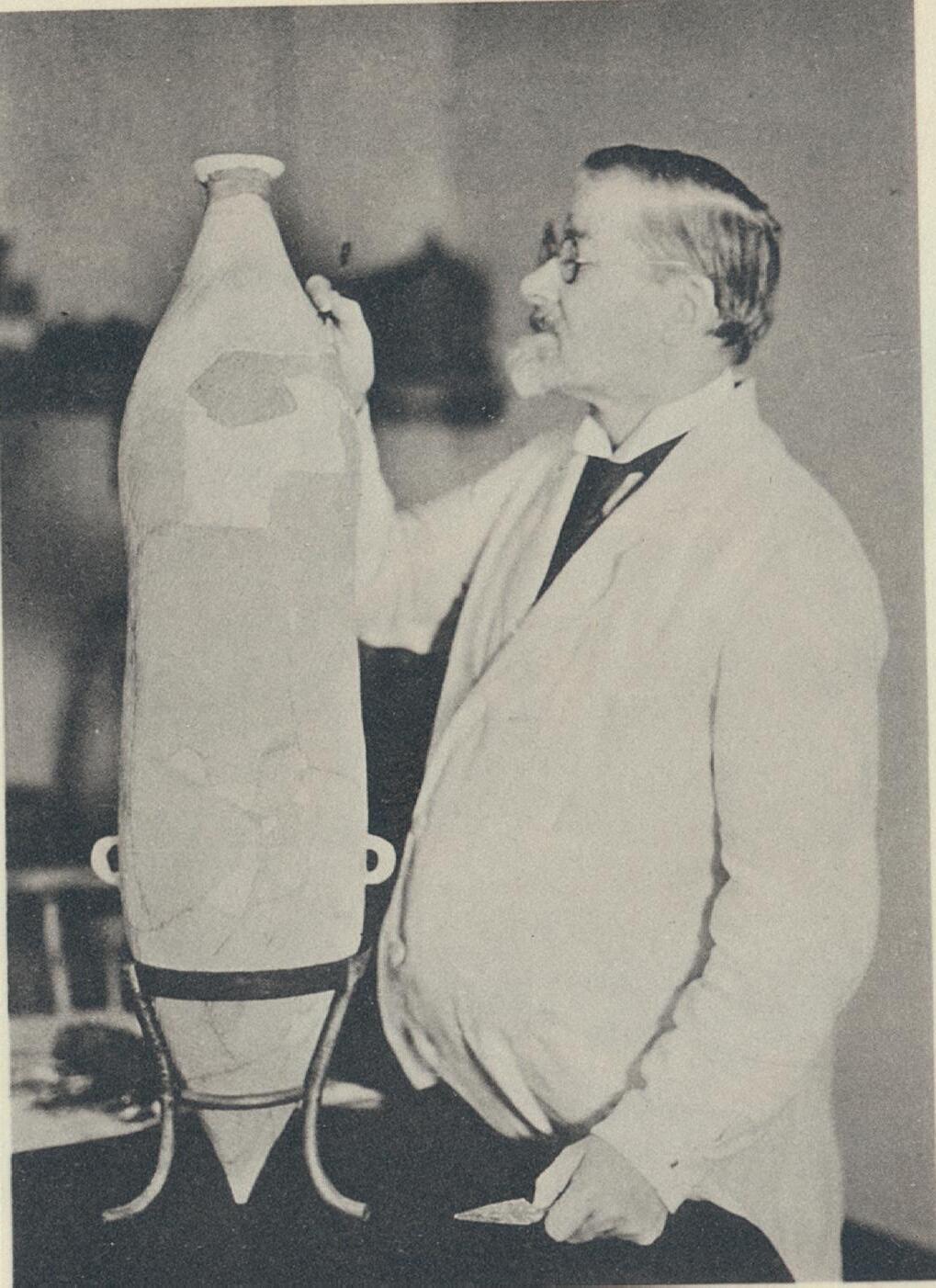
Fig. 2
The restoration in progress of a ‘red’ pottery bottle, Yangshao culture, Banpo phase, c. 4800 BC - c. 4300 BC. After ANDERSSON 1943, pl. 5.
FURTHER REFERENCE 附加參考:

Fig. 3
The restored bottle in fig. 2. After CHÊNG 1966, pl. 18, no. 2, p. 190.
For a red pottery example, painted with a stylized human face with fishes at the ears, see ZHU 2007 fig. 42, p. 52.
For another red pottery example, without handles, see KRAHL 2006, no. 1021, p. 13.
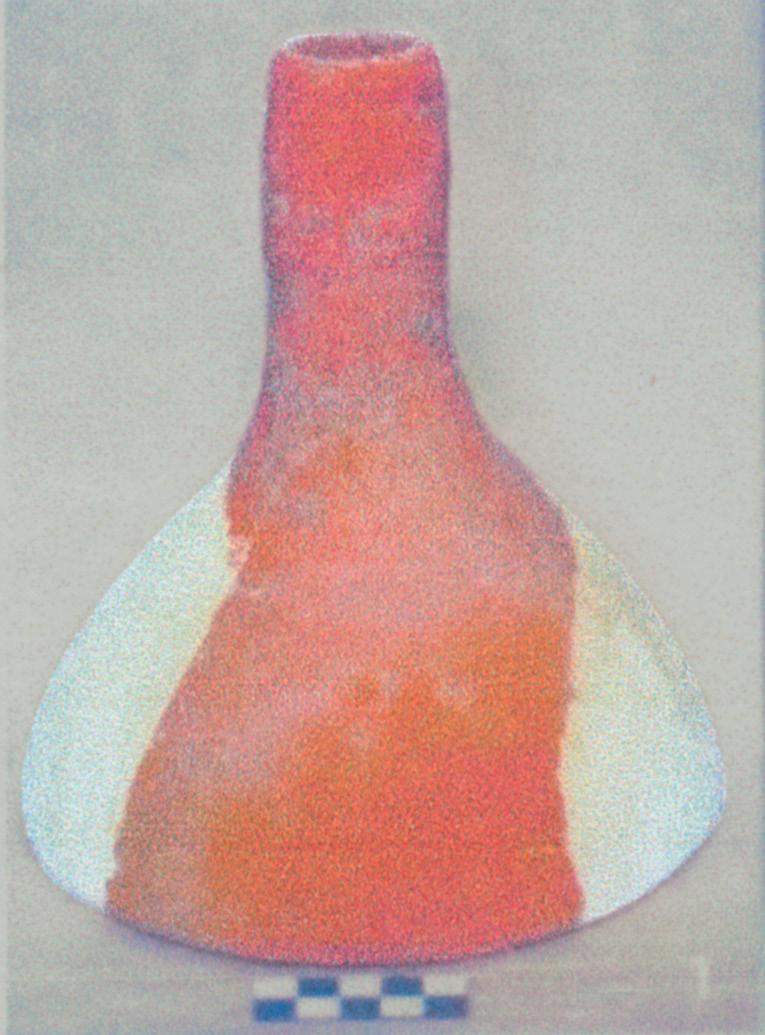
Fig. 4
A ‘red’ pottery funnel, Yangshao culture, Banpo phase, c. 4800c. 4300 BC. After online photo.



STEP 1. Cords were tied to the neck and the handles of jar (note: a curve in either cord line indicates that it is slack).

STEP 3. The neck cord was let go and the jar, which is heavier on the bulb end, turned down letting some water into it.


STEP 5. By using both cords, the bottle is raised to a horizontal position, in which it fills completely.

STEP 2. The jar was lowered into the water by the neckcord.


STEP 4. Before much water was taken in, the air in the jar turned it to a completely upside down position, where it came to rest.

STEP 6. When full, it could be pulled from the water using the neck cord.
Fig. 1 The step-by-step filling process of a similar example. Drawings by Chor Pak Kan Bernard.
A LARGE HEMISPHERICAL ‘RED’ POTTERY BOWL WITH A MARK
YANGSHAO CULTURE, BANPO PHASE, C. 4800 - C. 4300 BC.
A large, ‘red’ pottery bowl of nearly hemispherical form, with steeply rounded, even, and relatively thin walls, the mouth rim slightly turned in and tapered to a finer edge. A small, scraped, and recessed circular area, centered in the rounded base where a foot would normally be found, and outlined by a simple groove. The ware burnished inside and out, a wide border at the rim on the exterior, painted brown and engraved with a mark. The ware fired reddish tan.
DESIGN NOTES:
The elaborate mark on this bowl has been cut through the deep maroon band at the rim before it was fired while the clay was still damp. After firing, the exposed ware of the mark is a dull reddish brown, and matches the unpainted, fired surface of the bowl. The color of the ware under the fired surface, something which shows clearly where there are chips or scratches, is a distinctive bright orange. This helps to confirm that the mark was engraved before the bowl was fired. If the mark had been engraved after firing, it would be that distinctive orange color. Also, the edges and sculptural details of the mark clearly show that it was made when the clay was still soft.
Marks on these round-bottomed bowls, which include a simple cross (fig. 1), an arrow (figs. 2 - 3) and the mark on the present example are extremely rare. They have been described as marks of identification, clanship or ownership.
The purity of the shape of this bowl and its lack of ornamentation puts it in a class of Neolithic pottery described in today’s terms as minimalist. Ironically, the elaborate mark on this bowl is the only touch of ornamentation, but that was certainly not the intent. Its meaning is unknown, but the location in the wide, painted band at the mouth in the darker brownish color, indicates that it was meant to be clearly seen.
刻符紅陶缽
仰韶文化,半坡類型,約公元前 4800 年 – 前 4300 年
紅陶大缽,近乎半球。薄壁深弧,胎厚均勻。缽口微斂,口沿精細。圜底刻槽,刻線 簡潔,替代圈足。內外磨光。口沿之下飾寬邊,褐色,刻劃符號。經燒製,呈色紅褐。
設計解析:
陶缽符號刻線清晰。在陶坯濕潤未乾,尚待燒製前,於缽口下的深醬寬邊刻劃 符號。窯燒過後,刻線外露,呈色紅褐,色澤偏暗,與缽體未經施彩部分的顏色 一致。器表顯磕痕刮痕,橙黃鮮亮。由此可見,符號應該是在窯燒前就被刻在了 陶缽之上。若於窯燒後刻符號,刻線便顯橙黃。由刻線邊緣可以反映趁陶坯濕軟 未乾於缽體刻劃符號。
刻符通常包括十字 (圖 1 ) 或尖頭 (圖 2 – 3 ),此器刻符極其罕見。刻符為鑒別 個人、氏族、或所有權的標記。
此器質樸簡潔,不帶紋飾。如今,它更像是一件「極簡主義」藝術作品。不論 刻符代表了什麼,現在看來,不過是一絲裝點;可是,在當時,陶工並非是為了 裝飾陶缽才刻劃符號。刻符之意,迄今未明,所處位置卻透露了它的重要,理當 映入眼簾,被人識別。
Diameter 直徑: 29.2 cm.
Height 高: 14.0 cm.
REFERENCE 參考:

Fig. 1
A ‘red’ pottery bowl with a cross-shaped mark incised in the distinctly colored wide band at the rim, Yangshao culture, c. 5000 - c. 3000 BC, diameter 21.4 cm. After SHANDONG MUSEUM, 2015, p. 198, top.

Fig. 2
A ‘red’ pottery bowl with a cross-shaped mark incised in the distinctly colored wide band at the rim, Yangshao culture, c. 5000 - c. 3000 BC, diameter 21.4 cm. After SHANDONG MUSEUM, 2015, p. 198, bottom.

Fig. 3
A group of three ‘red’ pottery shards with incised marks, an arrow, a cross, and an ‘X’, Dadiwan culture, c. 6170 - c. 5370 BC. After E 2006, p. 50, top.



紅陶灶釜
新石器時代
紅陶灶,泥板搭建。前膛開敞,三足長方,承托灶膛。後膛壁兩排豎縫, 用來通氣。灶簷寬敞,簷壁下傾。灶心圓環,嵌放陶釜。紅陶釜,輪盤製造, 口沿開撇,器身矮扁,頸下四塊圓片。經燒製,呈色紅褐。
設計解析:
有不少小型陶製灶釜出土。灶釜外型簡單,乃「形式追隨功能」之成功典範。
肩部圓片功用不詳,其餘部分特征設計人性化。三足穩固灶膛,後膛壁開豎縫 通氣。膛壁內起凸緣,支撐陶釜。陶釜嵌入灶心。釜沿外撇,方便雙手提拿, 將陶釜從灶中取出。
現代爐具可調火候,真正改變了用灶生火的生活模式。
陶製灶釜,最多服務一到兩人。火膛內及底無曾經燒火或使用痕跡。陶製灶釜, 絕大多數由墓葬出土,並非出自人類棲居遺址。因而推斷,它們更像是隨葬冥器, 用作祭祀,服務來生。



A SMALL POTTERY PAINTED JAR WITH TWO NECKS
MAJIAYAO CULTURE, BANSHAN PHASE, C. 2600 - C. 2300 BC.
A small pottery jar, the globular body with two separate tall necks with everted mouth rims, a rounded shoulder tapering down to a small, slightly concave base, two small handles attached on opposite sides below the midpoint. The jar painted in dark brown and dark reddish brown on the upper part of the body with four open leaf-like shapes, each with a wide, vertical single line inside the upper half, bifurcating in the lower half, cross-hatching filling the spaces between them. Wide horizontal border lines above and below this register, with further cross-hatching on the neck, the interior of the mouth rim with short dark reddish brown strokes. The ware fired tan.
DESIGN NOTES:
This jar is relatively thinly potted. The shapes of the body and necks are symmetrical. The upper part of the interior of the necks show multiple, fine radial lines associated with wheel-turning. There is a slight bulge in the necks, a sculptural detail found on other jars of the same period.
The painting is very carefully executed. The composition of the elements is well-planned and strictly repeated on each side. The crosshatching is done with lines that are quickly and confidently painted, with remarkably consistent spacing and even weight, without looking mechanical.
The purpose of this extraordinary and extremely rare design with two necks is not known.1 There are very few other examples with two necks of roughly equal size (figs. 1 - 3). Sometimes these multi-neck jars are designed with one central neck surrounded by one to five smaller ones (figs. 4 - 5). There are too few of them extant to expect that they were used broadly, or for any normal daily use.
The painted designs on this jar, are frequently found on single-necked jars of the Banshan phase of the Yangshao culture.
1. Nils Palmgren offered the following observation on a similar jar in his ‘Kansu Mortuary Urns of the Pan Shan and Ma Chang Groups’ in Palaeontologia Sinica, Series D, Volume III, 1934, Fascicle 1, with pl. XIV: “There is no other like it in the collection of prehistoric pottery at my disposal.” Even though the date of publication is relatively early in the study of Neolithic pottery, he must have seen many of the forms which were made. Andersson also referred to one, perhaps the same one, in his Researches Into the Prehistory of the Chinese, 1943, p. 138.
Oxford Authentication Ltd, thermoluminescence test no. C113a94, 7 Feb., 2013, is consistent with this dating. (2013年2月7日牛津鑒定公司熱釋光檢測, 編號C113a94,斷代年份與圖錄一致)
Height 高: 18 cm.
Diameter of mouth rims 口徑: 6.5 and 6.1 cm.
Diameter of base 底徑: 7.5 cm.






